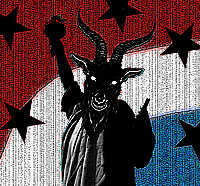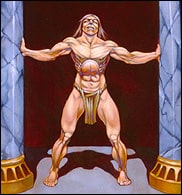One must not neglect the sacral landscape of Hellas. Small modest temples to heroes and lesser gods would be encountered along the high approaches to the community, or in seaside caves—such as the Cave of Orpheus on Lesbos—and on small islands doting the seaward approaches, such as the shrine to Grey-fish off of Karystos. God-houses dedicated near the border would tend to be those of universal deities—either the Twelve Olympians—or lesser ubiquitous figures such as Pan, Arachne, Hecate, Artemis. Hermes—god of travelers, truth seekers and athletes—would often have a shrine beneath a pass. The temple to Hera, Persephone, Demeter and other fertility deities would be located down on the bottomland. Whoever the patron god or goddess of a polis was would have a civic temple within the wall-enclosed city, a city that would seem tiny by modern standards.
Patron Deities
Athens—Athena
Larisa—Apollo
Onkhestos—Poseidon
Tamynae—Apollo
Toezen—Demeter
Sparta—The Dioscuri or Heavenly Twins, Castor and Polydeuces
Argos—Hera
Delos—Apollo
Korkyra—Dionysus
Eleusis—Demeter
Tegea—Athena
Rhodes—Dioscuri
Thebes—Apollo
Amyhlae—Apollo
Samos—Hera
Corinth—Poseidon
Elis—Zeus and Hera
Lemnos—Hephaestion
Nemea—Zeus
Lykea—Apollo
Dodona—Zeus of the Oak
Rhamnos—Nemesis
Dium—Zeus
Aegae—Zeus
Akraephia—Apollo
Arkadia—Apollo
Delphi—Apollo
Sikyon—Apollo
Lokris—Poseidon
Crete, majority of communities—Zeus
Lakonia—Demeter
Orkhemenos—Minyas
God Cults
Be mindful of the various cults to major gods, with Zeus of Oaths, Zeus of the Oak of Dodona, and Zeus the Thunderer representing some of the ways the chief deity was assimilated by native populations in the last Indo-European invasion.
Apollo, the deity represented by the widest range of cults, was primarily the god of excellence, and his veneration is an indication of the Hellenic obsession with excellence. Apollo of the Lyre, of the Fist, of The Sun [Helios or The Shining One], of far-darting arrows of Plague, of Lyko [wolf], etc., were but some of his specific cult titles. Below is an excerpt from my novel, Behind the Sunset Veil, from A Song at Seven Gates, in which a song sung by women who would see the favor of Apollo is addressed to one of his cultic aspects:
“ …So the Heliads wept
Turned to trees in their woe
Their tears congealed to amber,
Washed down the River Po;
Tears for the Sun,
The sorrow of the Sisters of The Shining One…”
The Heliads were the cursed sisters of Apollo Helios, and seen among women of learning—companions, for instance—as kindred earth spirits that might serve as divine intercessors.
Poseidon, normally associated with the sea, has inland temples—at Sparta for instance—to his Horse-Breaker cult, favored by wrestlers.
The female deities Hera and Athena also have numerous cults, with Athena, who is literally ‘Thought-lady’ having a warlike aspect, and Hera, mother of the gods, having a shield cult based at Argos.
Also, a look at the translations of community names could be indicative of their character, with Athens literally translating as ‘Thought,’ Sparta as ‘Rope’, Megara as ‘Chambers’, and Delphi as ‘Dolphins.’











